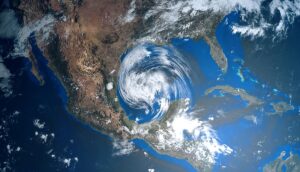As climate change worsens, increasingly more destructive storms batter America’s aging power grid. As lawmakers try to force a deadline for the transition to electric cars, will it be too much to handle?
Severe weather power outages have doubled over the past two decades
According to an analysis by the Associated Press of government data, power outages caused by severe weather have doubled over the past two decades across the United States, the AP reported.
According to data from the US Department of Energy, at least forty states are experiencing longer power outages, and of course, the problem is even greater in areas that routinely experience more extreme weather. Such blackouts can be harmful and deadly, especially for the disabled, elderly, or other vulnerable persons.
Another factor is that the decades-old transmission lines and equipment are getting more expensive to maintain. Companies pass on the cost of making utility upgrades, which means customers pay more for electricity. The more frequent weather disasters mean more frequent repairs and longer outages.
“The electric grid is our early warning,” said the University of California, Berkeley grid expert Alexandra von Meier. “Climate change is here, and we’re feeling real effects.”
Is America’s power grid really ready for electric cars?
In early August, President Joe Biden announced a goal of having half of America’s new motor vehicles be electric by 2030, Columbia.edu reported. That is only a decade away. California and New York have set mandates that all new passenger cars and trucks sold in the state must be zero-emission vehicles (read: Electric) by 2035.
But the question on everyone’s mind is whether America’s power grid can handle it. Already, every summer, in large urban areas, and particularly throughout the state of California, rolling blackouts occur due to overwhelming demand for electricity. This has been the norm for several decades.
If that’s happening without electric cars, what will happen when we add those to increase electricity demand?
In 2020, there were 286.9 million cars registered in America. In 2020, the US grid had 1,117.5TW of utility electricity capacity and 27.7GW of solar, according to the US Energy Information Administration.
Hypothetically, after all the vehicles in America were electric, charging at 7kW, they would need 2,008.3TW – nearly twice the grid capacity, according to Forbes. It gets worse. If they set at 50kW, they would need 14,345TW – 12.8 times the capacity! But not so fast. The US grid generated 4,007TWh of electricity in 2020. And if all US cars were electric, it would require a total of 1,106.6TWh, which is 27.6% of what the American grid produced in 2020, according to Forbes. Therefore, theoretically, the US power grid could handle all vehicles transitioning to electric.
Of course, the likelihood of every vehicle charging at once is not realistic and mathematically infinitesimally low. The larger problem is not electrical grid capacity, but charging station availability.
Severe weather becoming more disastrous, deadly and costly
Experts say climate change is stirring up more destructive storms in the form of tornadoes, hurricanes, and wildfires. Not only is the worsening weather destroying homes and infrastructure, but also taking lives. According to the National Oceanic and Atmospheric Administration (NOAA), 2021 was the deadliest weather year in the contiguous United States since 2011, with 688 people dying in 20 different billion-dollar weather and climate disasters that combined cost at least $145 billion.









